Welcome to the world of leatherworking, a timeless craft where creativity meets craftsmanship, and where every stitch tells a story. In this intricate art form, the choice of stitching technique can make all the difference.
Leather stitches are not merely functional but also deeply aesthetic, ranging from the robust saddle stitch that ensures longevity to the delicate elegance of decorative stitches that turn leather into wearable art.
Whether you’re a seasoned leather artisan or just beginning to explore this captivating realm, understanding the diverse types of leather stitches at your disposal is essential. Join us on a journey through the stitches that shape leather into remarkable creations.
1. Single Stitch
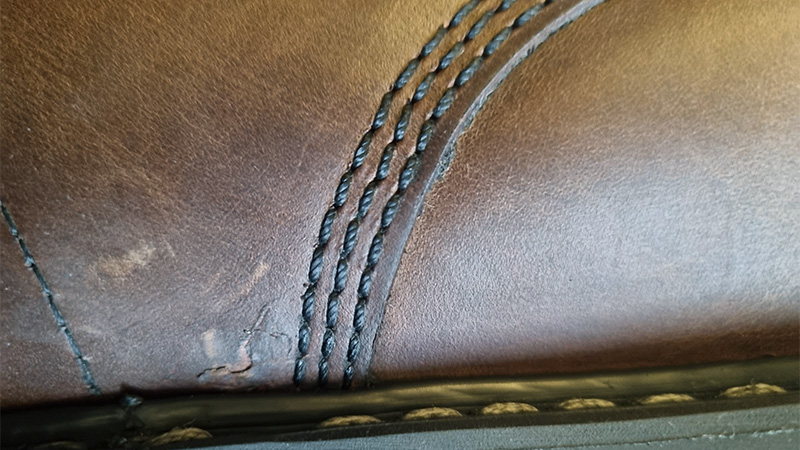
A single stitch is a fundamental sewing technique used in leathercraft and other crafts. It involves passing a needle and thread through a material, creating a single line of stitching.
While it may seem simple, single stitching is crucial for joining leather pieces or reinforcing seams. It’s often used for basic projects or as a starting point for beginners in leatherworking.
The simplicity of the single stitch allows crafters to practice precision and control in their work. While not as strong as some other stitches, it serves as a foundational skill in leathercraft, laying the groundwork for more complex and durable stitching techniques.
2. Saddle Stitch
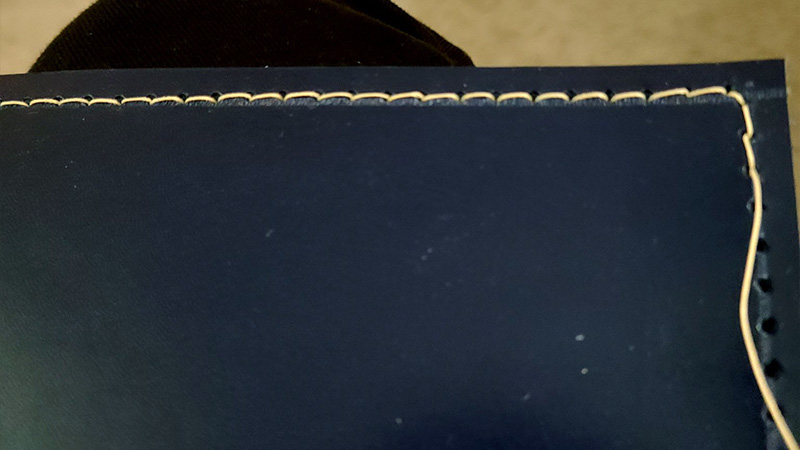
The saddle stitch is a renowned and highly regarded leatherworking technique, known for its strength and durability. Using two needles and two threads, this stitch involves passing each needle through the same hole in opposite directions, creating a symmetrical, double-threaded stitch.
Saddle stitching provides exceptional resistance to unraveling and wear, making it a preferred choice for crafting leather goods such as wallets, belts, and handbags.
Its neat and professional appearance, coupled with its robustness, ensures the longevity of leather projects. As a hallmark of quality craftsmanship, the saddle stitch remains a staple for artisans and leatherworkers, guaranteeing both form and function.
3. Cross Stitch
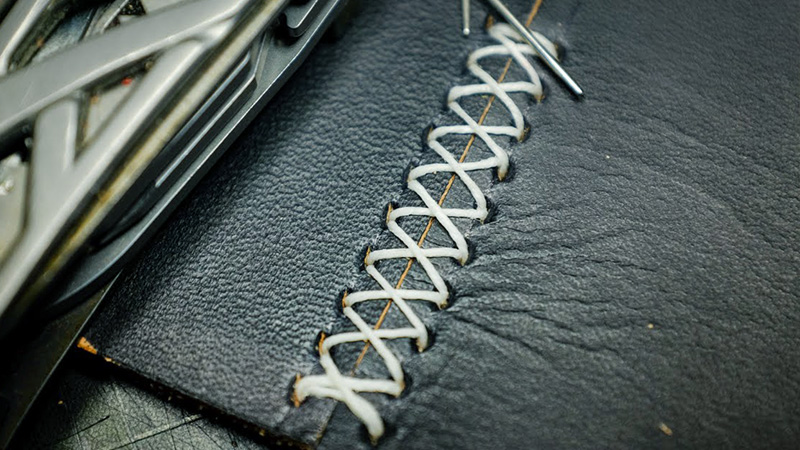
Cross stitch in leatherworking mirrors the embroidery technique of the same name. It’s a decorative stitch that involves creating X-shaped stitches on leather surfaces.
This technique adds texture, detail, and visual interest to leather projects. Crafters typically use cross stitches for embellishing leather items like wallets, belts, bags, and clothing.
It provides a unique and eye-catching design element while retaining the strength and durability of the leather. Cross stitching in leather allows for endless creative possibilities, from intricate patterns to personalized designs, making it a popular choice for those seeking to elevate the aesthetics of their leathercraft projects with a touch of artistry.
4. Z-stitch
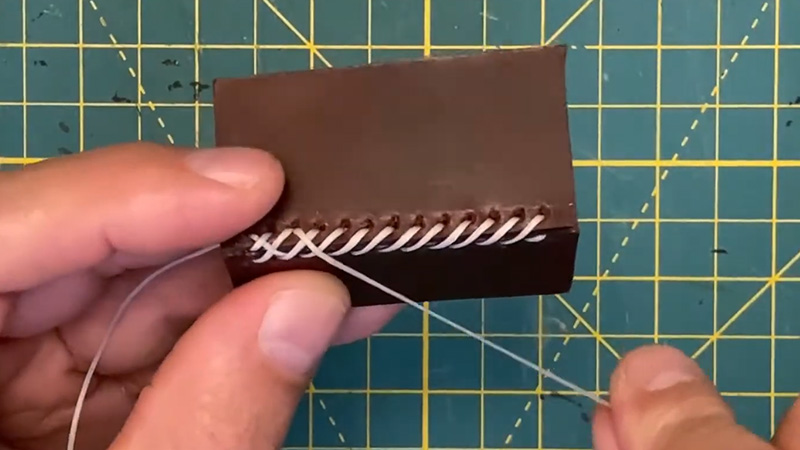
The Z-stitch is a specialized technique in leatherworking that combines both aesthetics and functionality. As the name suggests, it involves creating a series of interconnected “Z” shapes with the stitching pattern.
This decorative stitch not only adds a visually appealing design element to leather goods but also reinforces seams, providing additional strength and durability.
The Z-stitch is often used in leathercraft projects where both form and function are essential, such as leather bags, wallets, and belts. Its unique appearance sets it apart, making it a preferred choice for those seeking to infuse their leather creations with a distinctive and stylish touch.
5. Box Stitch
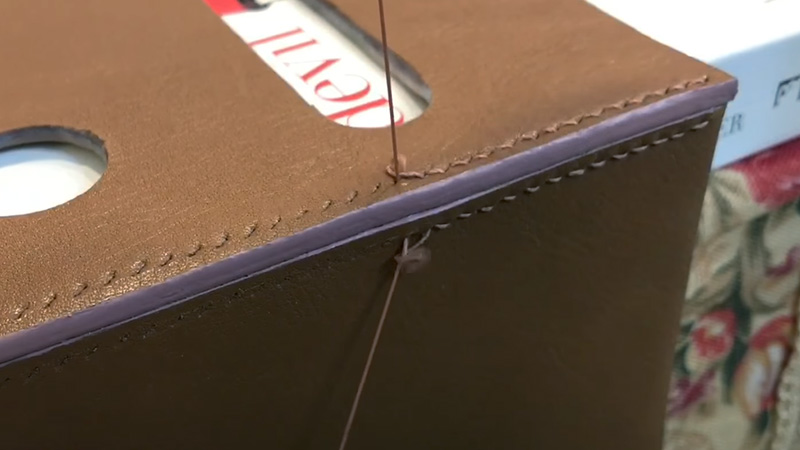
The box stitch, also known as a square stitch or corner stitch, is a versatile and utilitarian leatherworking technique. This stitch is characterized by its strong, box-like pattern formed at the corners of leather items, such as wallets, belts, and leather cases.
It enhances both the structural integrity and aesthetics of the piece. Crafters use this stitch to reinforce stress points and corners, preventing wear and tear over time.
Its durability and neat appearance make it a go-to choice for projects requiring robust construction. The box stitch embodies the fusion of practicality and craftsmanship, ensuring that leather goods not only look good but also stand the test of time.
6. Baseball Stitch
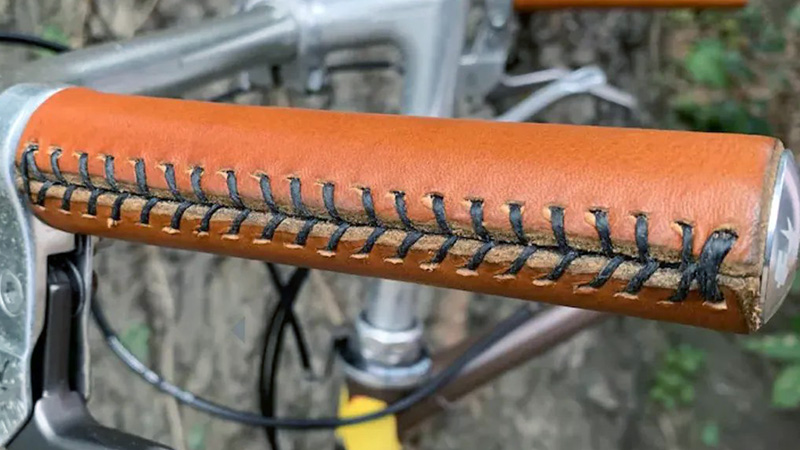
The baseball stitch, also known as the saddle stitch, is a distinctive and iconic technique primarily used for sewing baseballs and baseball gloves. It involves two parallel lines of stitching with a single thread, creating a secure, interlocking pattern reminiscent of the laces on a baseball.
Beyond its athletic origins, the baseball stitch has found its way into leathercraft, especially for handcrafted leather goods like wallets, keychains, and bracelets.
This stitch not only imparts a sporty and rugged appearance but also offers robust and enduring construction. It’s a testament to the fusion of sports heritage and artisanal craftsmanship, making it a favored choice for leather enthusiasts seeking both style and durability.
7. Decorative Leather Stitching
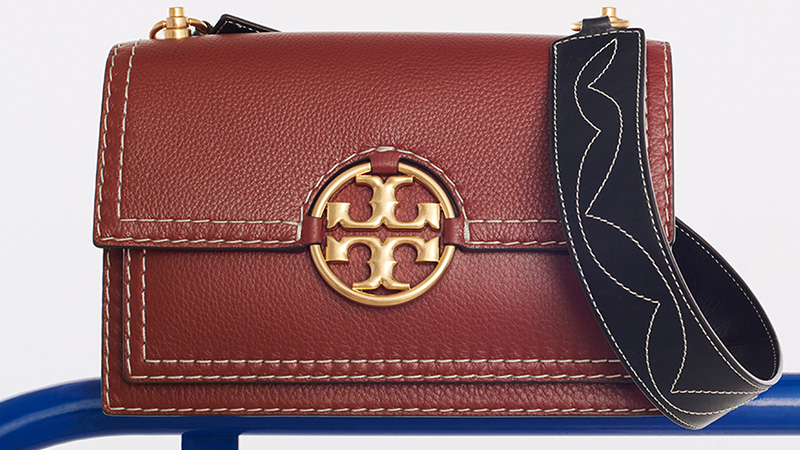
Decorative leather stitching is a creative and intricate technique that elevates leathercraft into an art form. It involves using various stitches, such as cross-stitch, herringbone, and whipstitch, to adorn leather pieces with captivating patterns, motifs, and textures.
Crafters employ decorative stitching to add uniqueness, personality, and visual interest to leather goods like bags, belts, and accessories. This technique showcases the artisan’s skill, attention to detail, and artistic flair.
Whether it’s delicate floral designs, geometric patterns, or personalized monograms, decorative leather stitching transforms functional items into exquisite works of wearable art, blending form and function in the world of handmade leather creations.
8. Durable Types of Leather Stitches
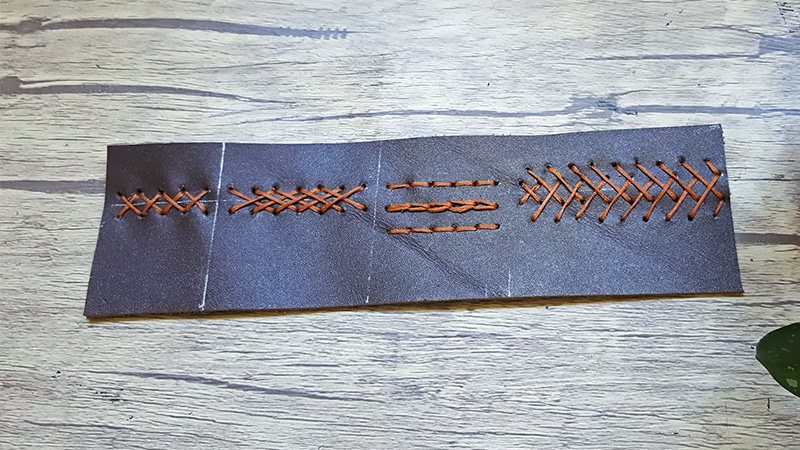
Durable leather stitches are essential for ensuring the longevity of leather goods. Among the strongest are the saddle stitch and the lock stitch. The saddle stitch, executed with two needles and two threads, offers exceptional strength, making it a top choice for wallets, belts, and bags.
The lock stitch, created by passing needles through the same hole in opposite directions, further reinforces seams and is commonly used in heavy-duty leather applications.
Both stitches excel in preventing unraveling and wear over time, ensuring that leather items not only endure but also maintain their functionality and appearance, embodying the hallmark of quality craftsmanship.
9. Butt Stitch
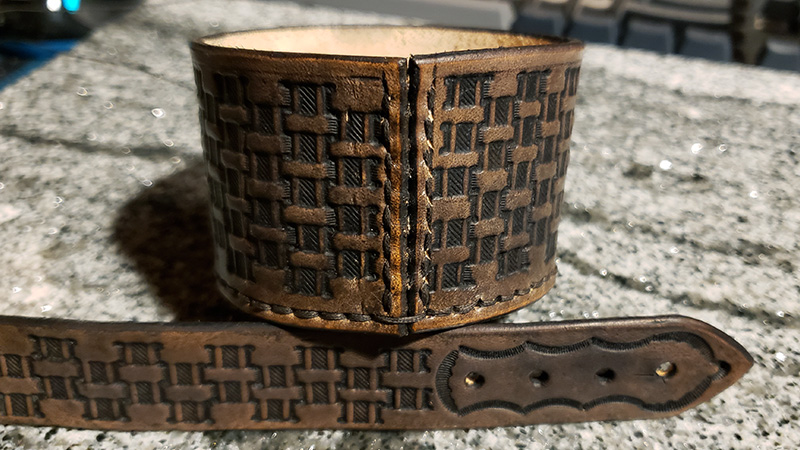
The butt stitch, sometimes called the butt seam or butt joint, is a specialized leatherworking technique used for joining two pieces of leather together.
In this method, the edges of the two leather pieces are butted up against each other, forming a flush, seamless connection. This stitch is typically used for creating inconspicuous seams in leather items where a visible stitch line would be undesirable, such as in fine leather garments or upholstery.
The butt stitch requires precision and skill to ensure a tight and secure seam, and when executed correctly, it results in a clean and nearly invisible join, adding to the overall elegance of the finished leather product.
Conclusion
In the rich tapestry of leatherworking, the stitches we’ve explored are the threads that bind creativity and functionality. From the sturdy saddle stitch to the ornate beauty of decorative stitches, each technique carries its unique charm and purpose.
As we conclude our journey through the world of leather stitches, remember that these skills are a testament to the enduring legacy of craftsmanship.
Whether you’re crafting durable leather goods, adding a touch of elegance to your creations, or simply honing your skills, the knowledge of these stitches is your key to unlocking endless possibilities.
So, as you embark on your leatherworking adventures, may your projects be not just products, but stories, woven stitch by stitch, reflecting your passion and mastery of this timeless art form.
Leave a Reply